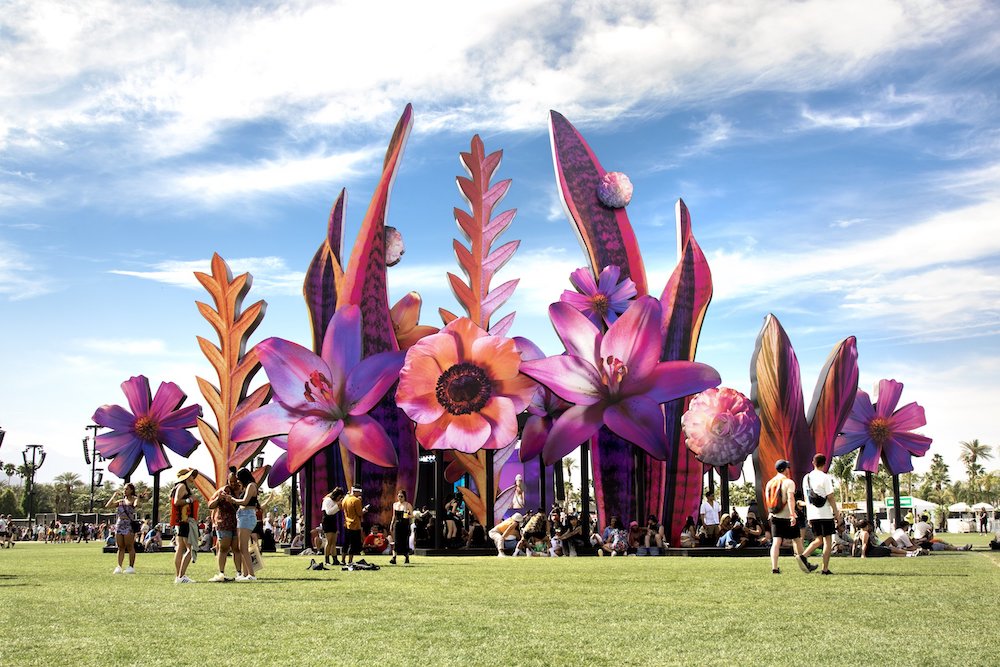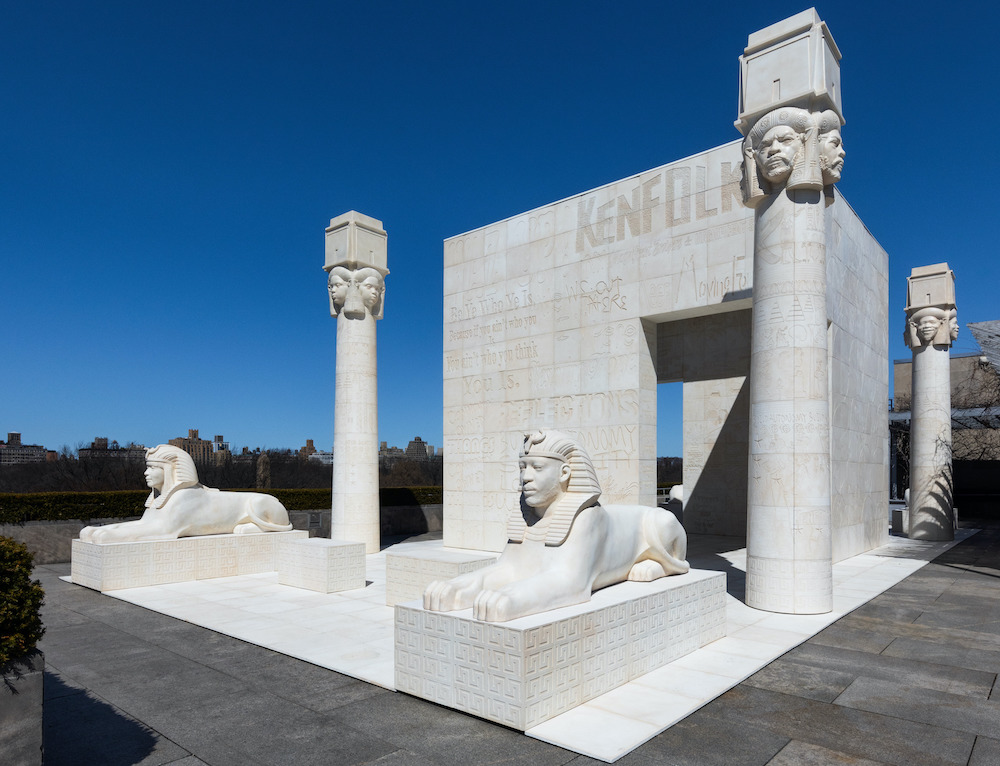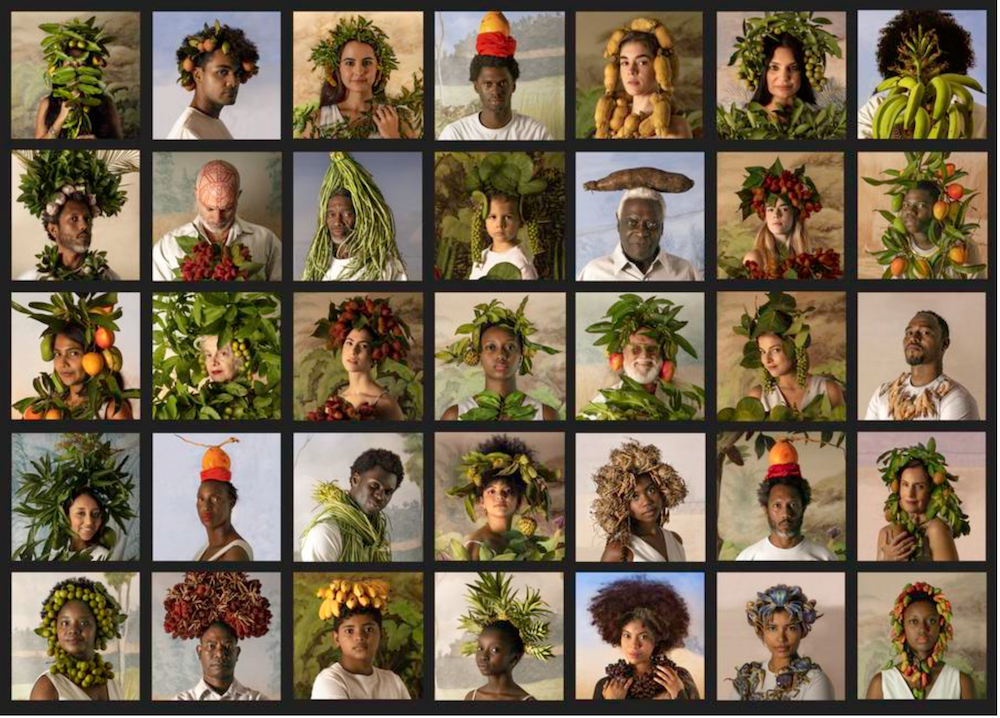Your cart is currently empty!
SHOPTALK: LA Art News Coachella and New York

Coachella’s Flower Power
It’s summer, and time to take a breath after the roller coaster ride we’ve been on since last fall. The art world has ramped back up—new exhibitions and new galleries (Sean Kelly, David Zwirner, the second for François Ghebaly) have opened. We also had our spate of art fairs earlier this year, with Frieze LA almost doubling its size, in terms of both its gallery roster and its new venue, the Barker Hangar. The main tent (there were two) was constantly jammed, and parking was at a premium; the rumor mill buzzes they may be looking for a new location for 2024.
For this issue, I’ll focus on two things—one, an interview with artist Maggie West during the Coachella Music and Arts Festival in April, and two, a trip to New York in May. Yes, THAT festival, which I had a chance to attend for the first time. It sold out the first weekend, with some 125,000 people in attendance; I went the second weekend and found it extremely crowded. West’s was one of four new art installations commissioned this year—along with Kumkum Fernando, Vincent Leroy and Güvenç Özel—plus several holdover presentations from previous fests.
West’s “Eden” is an expansion of her regular practice in which she takes time-lapse videos of flowers and plants, following their blooms and slight movements. In post-production, she combines and manipulates the images, often erasing the background so the subjects appear to be floating in space. The details of these plant forms were projected onto larger-than-life extruded sculptures in the shape of flowers and fronds, some up to 60 feet tall. The work provided a lyrical, striking reminder of nature in the very man-made setting of a vast contemporary music festival.
“During the pandemic, I spent a lot of time gardening,” said West. “Obviously, I had a lot of free time—I was so stressed out. A lot of galleries, a lot of things went under, so for me I started gardening as a way to cope with that, and I got really into time-lapse photography.” Not surprisingly, her recent body of work reflects her fascination for flowers and plants. She added, “There’s a sense of hope and renewal when you see things grow and change and bloom.”
One also notices a lot more detail when images are enlarged, as was the case at Coachella, where people could walk up to and between the sculptural pieces. “A lot of my work involves a recontextualization of subjects by using colored lighting,” West said. “It gives you a new perspective; it makes you take a second look at it.”

Summer in New York
In the second half of May, I took my first trip to New York in four or five years. The beat of the city is back, with bars and restaurants filled to the brim, and the Met packed with long lines for two blockbuster shows (Karl Lagerfeld and van Gogh). The Roof Garden Commission featured a Lauren Halsey installation, a series of sculptures that recreates ancient Egyptian columns and statuary with African faces and African-American graffiti on block walls made to look like walls of ancient tombs. I also passed through the Cecily Brown show. She has never been one of my faves, but I like these recent paintings, with her confident handling of very drippy paint that feels extraordinarily playful and luxuriant.
One afternoon I spent wandering Chelsea, where galleries are so densely packed you can easily drop into a dozen over a few hours. At David Zwirner was Yayoi Kusama’s “I Spend Each Day Embracing Flowers” (up through July 21) which included painting and epic sculpture—one room was filled with three large undulating screens covered with polka dots, as if her pumpkins had unfurled; another room contained a couple of her gigantic psychedelic flower sculptures. Unfortunately, to enter the new Infinity Mirror, there was a line down the block, so I skipped that.
Interviewing Kusama in Japan over 20 years ago was one of the most riveting professional moments of my life—she was semi-lucid, although her memory was selective, recalling, for example, how frugal her onetime boyfriend Joseph Cornell was. They once went out to dinner with another couple and she recollected that he “decided that the four of us would share one dish between us.” She recounted all this with her deadpan face, but there was a certain humor in the way she told the story—breathlessly, with hardly a pause, as if she were rushing to get the story out.
Kusama became known for her net paintings in which she knit together a series of wavy lines across the canvas, creating a “net” effect. These were largely monochromatic, with occasional introduction of other background colors, such as yellow. In contrast, her recent paintings are a riot of color, and quite brilliant arrangements of lozenges, fat lines and human faces. It’s her gift that they somehow work together.
One of the delights of Chelsea is coming upon the unexpected treasures. For me there were two discoveries. One was Kelly Akashi’s “Infinite Bodies” at Tanya Bonakdar—a truly sublime grouping of sculpture and installation, some pieces displayed on rammed-earth pedestals in a very spare space. The pieces featured parts of her body: a slim torso, dangling legs and hands, along with bronze, glass and found objects.
The other discovery was Colombian photographer Ruby Rumié at the Nohra Haime Gallery, in the exhibition “Us, 172 Years Later.” There were two portrait series here, both of Colombians with their favorite foods; one close-up and the other full-length. The way Rumié has arranged the foods, such as peppers, cherimoya and blue crab, is both whimsical and strangely beautiful—many of them are worn as headgear. Then there are the faces of her subjects—old, young, male, female—faces that have remarkable character and directness, grounded in dignity and a powerful sense of identity. The background has been taken from 19th-century colonial-era prints, which to me suggests the history behind each person. It’s also a way to visually flatten the background and let us focus on the faces and personal attributes.
I especially love the way the artist depicts herself. In one enlargement (C-prints mounted on aluminum), she’s walking barefoot wearing a long, off-white cloak with matching trousers and carrying a big bundle of bananas. She’s holding them up against her face so that you can’t see her features. This tells me she’s a chronicler—that her face is not important, but her story is. I really look forward to seeing much more from her.
